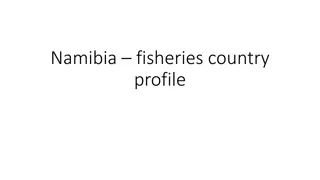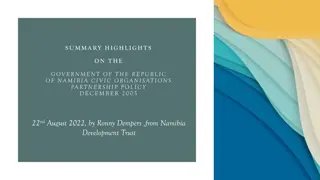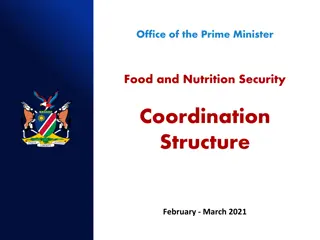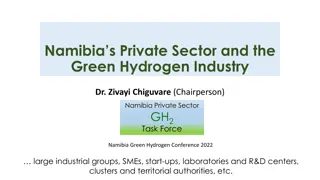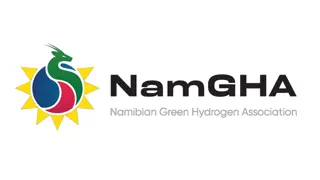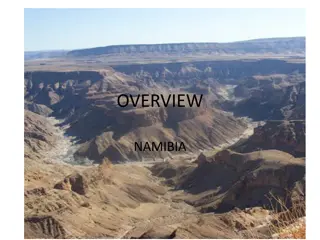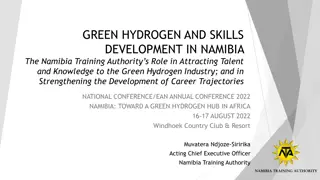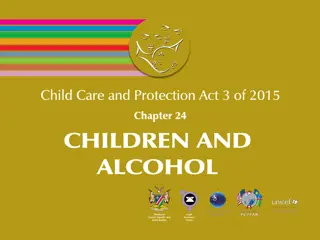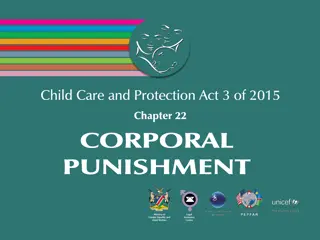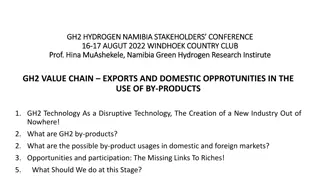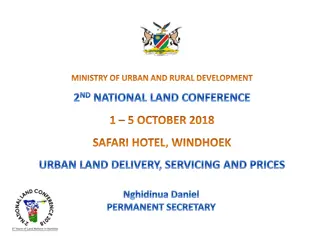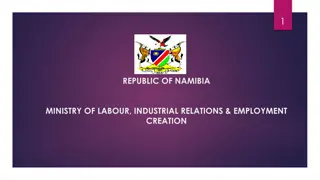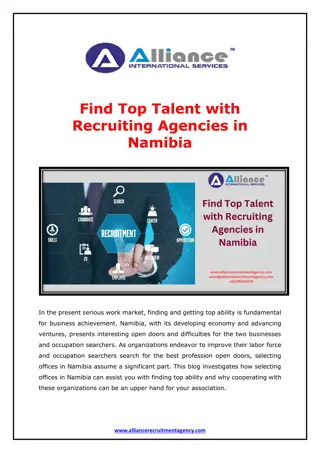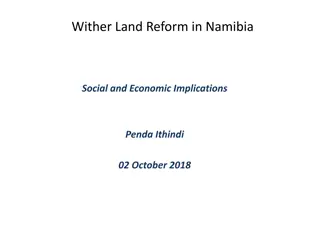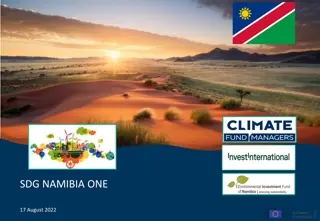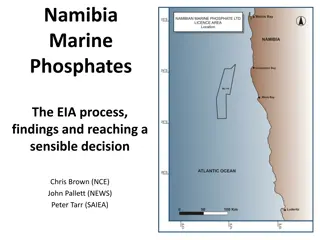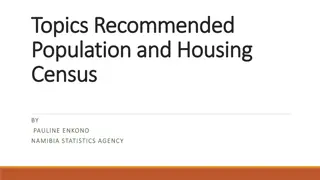Permaculture Design and Practical Application in Namibia by Eloolo Permaculture Initiative
Explore the transformative potential of permaculture in a Namibian context, as Donovan Wagner and Eloolo Permaculture Initiative champion resilience and abundance in the face of climate crises. Discover the history, principles, and practical projects driving permaculture adoption in Namibia since 2017, empowering individuals and organizations to design sustainable, interconnected ecosystems that meet diverse human needs.
Download Presentation

Please find below an Image/Link to download the presentation.
The content on the website is provided AS IS for your information and personal use only. It may not be sold, licensed, or shared on other websites without obtaining consent from the author.If you encounter any issues during the download, it is possible that the publisher has removed the file from their server.
You are allowed to download the files provided on this website for personal or commercial use, subject to the condition that they are used lawfully. All files are the property of their respective owners.
The content on the website is provided AS IS for your information and personal use only. It may not be sold, licensed, or shared on other websites without obtaining consent from the author.
E N D
Presentation Transcript
Permaculture Design and practical application in a Namibian context by Donovan Wagner Eloolo Permaculture Initiative
Oshivambo for abundance Why Eloolo ?! We believe that even though faced with the effects of the current climate crises, Namibians can transform their environment into a resilient and abundant human eco-system that provides for all our needs!
Permaculture in Namibia: Eloolo and others Namibian NGO since end 2017 Projects incl.: School garden, Farm Okukuna, Clean Travel (tree planting), lodge garden in Zambezi, ToT of Shack Dwellers Association of Namibia members and training and consultation for conservancy village gardens Others: Dr Ibo Zimmermann/NUST and many others who have completed the Permaculture Design Certificate (PDC) or who are self-taught are using this knowledge and applying it on their farms, homes, work or elsewhere 2015 NOA ran Namibia s first and only full PDC near Okahandja More and more people and organizations are looking into Permaculture for guidance as it becomes apparent that we need to look at the world and environment around us as a whole, a system that is inter-connected and dependent on all its individual parts.
History & beginnings: 70s Australia, Bill Mollison & David Holgrem Design philosophy Systems thinking 3 ethical and 12 design principles With nature and not against Providing all human needs One-million-dollar question: What is What is Permaculture? Permaculture? DEFINITION (one of many!): Permaculture is the conscious design and maintenance of agriculturally productive systems which have the diversity, stability, and resilience of natural ecosystems. It is the harmonious integration of the landscape with people providing their food, energy, shelter and other material and non-material needs in a sustainable way.
Ethical and design principles Ethical and design principles
Input & output Each element 3 functions making connections, building synergies! No waste/cycling Design considerations: - Elements (sun/wind/fire/security) - Slope - Aspect - Access - Existing structures and future plans Permaculture design - basics basics
Design- the more detail the better! Appropriate methods and technologies: drylands Energy: solar, appropriate technology eg rocket stoves Water: catch and store; slow, spread, sink, appropriate tech: eg dry toilets Earthworks(small/big): swales, dams, erosion control, Watering conservationeg mulch, watering: drip or planning Permaculture - Namibia: Namibia: practical practical context context Soil - nitrogen fixers and guilds, organic content and soil life eg compost, EMs, BioChar etc. Microclimate:Hedges, living fences to keep out dry and strong winds and protect from frost. Trees keep it cool and moist in summer. TREES! Trees! Trees!
Experiences & feedback from projects Most partners do not have sufficient understanding of what exactly Permaculture is Permaculture is often seen of an organic way of growing food BUT we start looking at food as an integrated part of our environment and life. Planning period too short/projects and partners do not have the time Design has become a more simplified process Local/traditional knowledge must be appreciated and integrated Keep it simple, start small, work with what you have eg materials/upcycle More follow up needed/would be great!
The way forward The way forward Networking and info sharing - already starting to happen across platforms Partnerships, locally and internationally R&D - local hubs eg NE, central, coast, south Knowledge transfer -students, schools, farmers and communities etc Capacity building - organizational





